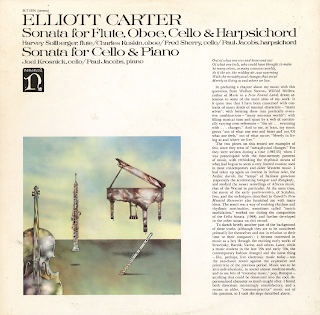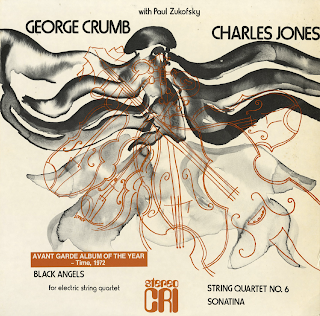Howdy Folks! Welcome to The UnEarthed In The Atomic Attic album blog! Here you will find a wide variety of unusual Space Age Vinyl finds that feature good quality cover scans, jacket notes and audio samples for you to enjoy. I'm here to have fun and hope you will share in my process of discovery!
Search Manic Mark's Blog
Saturday, January 8, 2022
Hawaii - Martin Denny
Clap Hands - Luther Henderson
Friday, January 7, 2022
Day By Day - Doris Day
Hawaiian Luau! - Johnny Pineapple & Johnny Poi
Standards In Silhouette - Stan Kenton
Thursday, January 6, 2022
Beauty And The Beat! - Peggy Lee & George Shearing - Live At The National Disc Jockey Convention
Viva - Mexicali Brass
Adios Muchachos
Habanera
Dengozc
Toreador Song
La Paloma
Viva, Viva
Two Guitars
Chiapanecas
Vote For Billy Williams
Sonata For Flute, Oboe, Cello & Harpsichord - Elliot Carter
Today's Top Hits - Capitol
1936 - 1956 - Bob Crosby
Wednesday, January 5, 2022
All The Things You Are - Stanley Applewiate
Kenton's West Side Story - Stan Kenton
California Dreamin' - Bud Shank
Tuesday, January 4, 2022
Guitar / Guitar - Herb Ellis - Charlie Byrd
Toru Takemitsu - Seiji Ozawa
Ancient Voices Of Children - George Crumb
George Crumb
A Cycle of Songs on Texts by Federico Garcia Lorca for Mezzo-Soprano, Boy Soprano, Obe, Mandolin, Harp, Electric Piano & Percussion
Jan DeGatnai, Mezzo-Soprano
Michael Dash, Boy Soprano
The Contemporary Chamber Ensemble
Arthur Weisburg, Conductor
Commissioned by the Elizabeth Sprague Coolidge Foundation in the Library of Congress
First Performed at the 14th Festival of Chamber Music in the Coolidge Auditorium, Library of Congress, Washington, D.C., October 31, 1970
Recorded with the assistance of the Ford Foundation Recording-Publication Program
Engineering: Marc J. Aubort, Joanna Nickrenz (Elite Recordings, Inc.)
Coordinator: Teresa Sterne
Art Director: Robert L. Heimall
Cover Art: Bob Pepper
Cover Design: Robert W. Zingmark
Nonsuch Records H-71255
1971
Personnel:
Arthur Weisberg: ConductorJan DeGaetani: Mezzo-Soprano
Michael Dash: Boy Soprano
The Contemporary Chamber Ensemble
George Haas: Oboe & Harmonica
Stephen Bell: Mandolin
Susan Jolles: Harp
Gilbert Kalish: Electric Piano & Toy Piano
Raymond DesRoches, Richard Fitz & Howard Van Hyning: Percussion
Jacob Glick: Musical Saw
From the back cover: George Crumb was born in Charleston, West Virginia. His principal teacher in composition was Ross Lee Finney at the University of Michigan. Mr. Crumb has been the recipient of numerous awards, including grants from the Fullbright Commission; the Rockefeller, Koussevitzky, and Guggenheim Foundations; and the National Institute of Arts and Letters. His Echoes Of Time And The River; Four Processionals For Orchestra, premiered by the Chicago Symphony, was awarded the 1968 Pulitzer Prize in Music. George Crumb currently teaches composition at the University of Pennsylvania.
Jan DeGaetani, born in Ohio, is a graduate of the Juilliard School of Music. She has been heard in oratorio, opera, chamber music, and solo recitals on radio and television in the U.S.A. and Europe, and is especially noted for her performances of contemporary works. A former faculty member of the Juilliard School, Miss DeGaetani conducts master classes and was for three summer Artist-in-Residence at the University of Wisconsin. She has recorded for Decca, CRI, Music Guild, Acoustic Research, and Nonesuch. Ancient Voices Of Children is one of many new works written for Jan DeGaetani.
Michael Dash, a member of the Berkshire Boy Choir, has made several appearances in the title role of Menotti's Amahl and The Night Visitors, and in Britten's Curlew River and Noye's Fuddle; he has also performed as soloist with major orchestras and choruses in the eastern United States. He studies voice and flute at the Washington Community School of Music, where his father, Dr. Calvin Dash, is director. Michael Dash's performance in this recording of Ancient Voices Of Children – a role he sang in the work's premiere – marks his record debut.
In 1960, Arthur Weisberg and about a dozen outstanding New York instrumentalists formed the Contemporary Chamber Ensemble – a group devoted to the study and performance of modern music. The Ensemble received a grant from the Rockefeller Foundation in 1965 to set up a three-year residence at Rutgers University and during the ensuing period, developed an extraordinary repertory of new works while concertizing widely. Following the Rutgers residency, the Contemporary Chamber Ensemble has continued to perform throughout the USA; they have been invited to perform at the Library of Congress for the last nine consecutive years. The Ensemble's most recent appearance there, at the Coolidge Foundation's 14th Festival of Chamber Music, October 1970, included premieres of six new works conducted by Arthur Weisberg, among them George Crumb's Ancient Voices Of Children.
Early in 1969m Nonesuch issued three albums of recent American compositions recorded by the Contemporary Chamber Ensemble under a grant from the Martha Baird Rockefeller Foundation (SPECTRUM: New American Music, H-7129, H-7120, H-71221). Each of these albums won honors for the composers in the 1970 Koussevitzky International Recording Award. More recently, the Contemporary Chamber Ensemble has appeared on Nonesuch in a performance of Arnold Schoenberg's Pierrot Lunaire, Op. 21 (H-71251), with Jan DeGaetani as soloist. The Ensemble has also recorded for Acoustic Research and CRI.
1) I. El Nino Busca Su Voz
2) Dances Of The Ancient Earth (for oboe, mandolin, harp & percussion)
I3) II Me He Perdido Muchas Veces Por El Mar
1)III De Donde Vienes, Amor, Mi Nino (Dance Of The Sacred Life-Cycle)
IV. Todas Las Tardes En Granada, Todas Las Tardes Se Muere Un Nino
2) Ghost Dance (for mandolin & maracas)
3) V. Se Ha Ilenado De Luces Mi Corazon De Seda
Monday, January 3, 2022
The Afro-Eurasian Eclipse - Duke Ellington
My Blue Heaven- Gene Austin
Sunday, January 2, 2022
George Crumb - Charles Jones



























